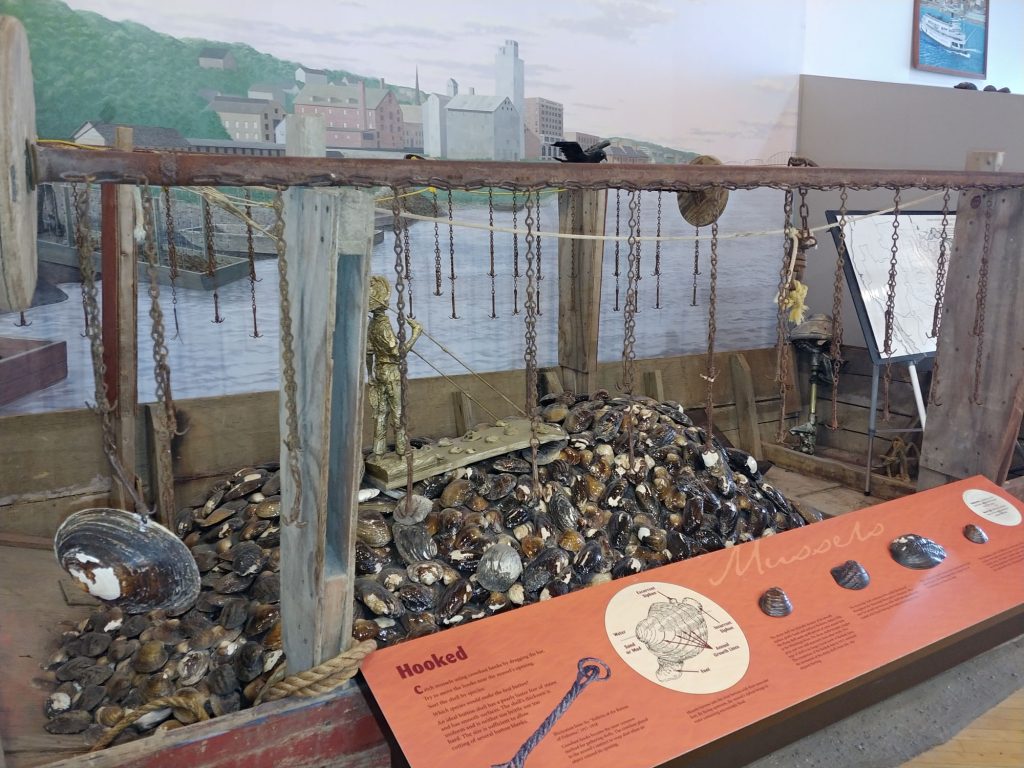Spring is just around the corner, so it’s a perfect time to discover the scenic sights, historical attractions, and charming cities and towns along the northern Great River Road states. Use this itinerary for a quick trip through Minnesota, Wisconsin, Illinois, Iowa, and Missouri on our All-American Road.
Day 1 – Minneapolis/Saint Paul
Start your northern Great River Road adventure in the Twin Cities of Minneapolis and Saint Paul, which offer tons of opportunities for recreation and fun along the Mississippi River. Explore the wonders of the river at the Mississippi National River & Recreation Area, snap some photos of the iconic Minnehaha Falls at Minnehaha Regional Park, or hop on a river cruise and see the sights.
History lovers should check out the riverside Mill City Museum, which makes its home in an old flour mill and uses an engaging multimedia presentation to tell the story of the region. Another iconic attraction is Historic Fort Snelling, a National Historic Landmark that was built in 1825 and is located near the confluence of the Mississippi and Minnesota rivers.
If you’re up for a bit of a road trip, head north for about 200 miles to reach Itasca State Park and the headwaters of the Mississippi River. Here, the river is narrow enough to walk across with the help of some strategically placed stepping stones.
Day 2 – Minnesota river towns and Wisconsin
Head southeast out of the Twin Cities along the Great River Road to find a series of charming Minnesota river towns, Red Wing and Winona among them. Red Wing (yes, it’s the namesake for the famous boot brand and the iconic pottery company) has a historic downtown filled with shops, restaurants and even the flagship Red Wing Shoe Store and Museum where you’ll find the largest boot ever produced. Winona is home to the Minnesota Marine Art Museum and stunning views of the river at places like Garvin Heights Park.
On the Wisconsin side of the river, you’ll find great places to explore like Perrot State Park north of Trempealeau and Wyalusing State Park near Prairie du Chien. The La Crosse Region offers outstanding recreation along the Mississippi River Trail and fantastic views from the top of Grandad Bluff.
In the southwestern corner of the state lies Potosi, home to the historic Potosi Brewing Company (don’t miss the transportation museum and the National Brewery Museum on site, too). All along the Wisconsin Great River Road you’ll find unique roadside stops, too, like the one-of-a-kind Dickeyville Grotto.
Day 3 – Galena and Iowa
Head across the state line into northwestern Illinois and you’ll find Galena, routinely named one of the most charming towns in the country. The Galena River—which empties into the Mississippi River—passes through the historic downtown that’s home to tasty restaurants, unique gift shops, and more. And you can take in views of the Mississippi River at places like Chestnut Mountain Resort, which is home a scenic ski hill in the winter and offers an alpine slide, zip lining, river cruises, and more in the spring, summer, and fall.
Drive west across the river into Iowa on U.S. Highway 20 and you’ll hit Dubuque, which is home to several interesting attractions. Head to the National Mississippi River Museum & Aquarium, a Smithsonian affiliate museum that’s home to more than 200 species of fish, mammals, reptiles, and other animals that can be found along the Mississippi River and its tributaries. Just south of downtown Dubuque, you’ll find the Mines of Spain Recreation Area and E.B. Lyons Interpretive and Nature Center, a 1,400 acre park that offers outstanding wildlife viewing opportunities, great recreational trails, and panoramic views of the Mississippi River.
Another great view of the river can be found at Bellevue State Park, which is about a 30-minute drive south of Dubuque. The park—split into northern (Nelson) and southern (Dyas) units—is home to scenic overlooks, a nature center, a butterfly sanctuary, and more than 7 miles of hiking trails.
Keep heading south along the river and spend your night in the Quad Cities of Davenport and Bettendorf on the Iowa side of the river and Rock Island and Moline on the Illinois side.
Day 4 – Iowa and Illinois
The Quad Cities offer a great mix of outdoor recreation (check out their bike paths along the Mississippi River), great shopping and dining, and unique attractions. One spot you shouldn’t miss is the John Deere Pavilion in Moline, which houses new and vintage equipment made by the agricultural manufacturer, as well as interactive exhibits.
Other Quad Cities attractions include the Mississippi River Visitor Center on Rock Island, where you can watch barges pass through Lock & Dam 15; Modern Woodmen Park, home to the Class-A Quad Cities River Bandits baseball team; Rock Island’s Black Hawk State Historic Site, named for the Native American leader whose tribe made their home in the area; and the architecturally stunning Figge Art Museum in Davenport.
Engaging river towns and unique attractions line both sides of the river as you head south through Iowa and Illinois. In Iowa, take a drive or walk on Burlington’s Snake Alley, the so-called “world’s crookedest street,” or learn about the history of the Church of Jesus Christ of Latter-day Saints and the Mormon pioneers who made their homes in Nauvoo along the Mississippi River in western Illinois.
End your day in Quincy, a historic city in Illinois that’s home to iconic architecture, the Mississippi Valley Wine Trail, and much more.
Day 5 – Missouri
Finish your tour of the northern Great River Road in the hometown of America’s most famous author. Hannibal, Missouri, is located about 20 miles south of Quincy—you’ll know you’ve reached it when you see the Mark Twain signs everywhere. Hannibal was where Mark Twain spent his formative years, and the city honors their native son to this day at attractions like the Mark Twain Boyhood Home and Museum, the Mark Twain Cave Complex, and dozens of businesses, parks, and other attractions that bear the author’s name.
Stay on the Missouri side of the river and head south for about 2 hours and you’ll arrive in St. Louis, home to everything from Major League Baseball to mouthwatering barbeque. Some sites you shouldn’t miss: Gateway Arch National Park, Forest Park (which is home to free attractions like the St. Louis Zoo and the St. Louis Art Museum), and the world-famous Budweiser Brewery Experience.
If you want to head even further south on your road trip, you can visit Ste. Genevieve, the oldest permanent European settlement west of the Mississippi River for a true taste of history. The scenic Shawnee National Forest, located between the Mississippi and Ohio Rivers in southern Illinois, covers nearly 300,000 acres and is home to awe-inspiring attractions like Garden of the Gods.
(Photo: Travel Wisconsin)











